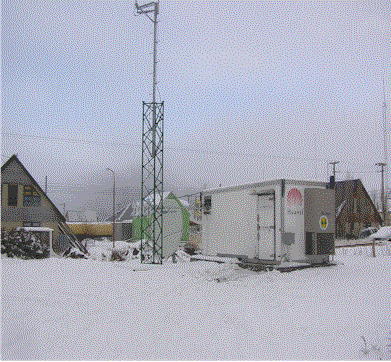|
In sociological terms, communication is the process
whereby a message, sign or symbol is transmitted (regardless of the
medium) from a subject (transmitter, ego) to another (receiver,
alter). Communication is fostered when both terms of the interaction
share the same standard-axiological framework of reference, because
there will be greater understanding of the underlying meaning. As a
result, communication involves consideration of the sociocultural
environment in which this communicational interaction occurs –or tries
to occur.
But communication shall not occur if the message,
sign or symbol, translated into language (written, oral, bodily sign,
binary) or the information in the process of individual and social
incorporation, cannot be incorporated for the message to be understood
or for the information to be translated really and positively.
 We
could refer to binary information theory, where the amount of
information transmitted by a message is the binary logarithm of the
number of alternatives capable of defining the message without
ambiguity; or we could describe information entropy theory in
accordance with the laws of thermodynamics, in strict adherence to
Umberto Eco’s approach. But we would be sidetracking the purpose of
the present article, which is aimed at focusing special attention on
the fact that communications and information are not an individual
process, but rather a social process involving all individuals of a
society. We
could refer to binary information theory, where the amount of
information transmitted by a message is the binary logarithm of the
number of alternatives capable of defining the message without
ambiguity; or we could describe information entropy theory in
accordance with the laws of thermodynamics, in strict adherence to
Umberto Eco’s approach. But we would be sidetracking the purpose of
the present article, which is aimed at focusing special attention on
the fact that communications and information are not an individual
process, but rather a social process involving all individuals of a
society.
At present, reference is being made to social
integration geared to achieving community integration –along a
vertical axis where the local community is integrated into the global
community in which it is included-, where the means to produce
communication and to transmit information are essential for the
development of communities. These means would be provided by digital
and multimedia telecommunication infrastructure, which at present is
turning out to be more efficient, with low installing and operating
costs and with very wide bandwidth and optimal speed.
One way of ensuring that the technical and economic
requirements of a sound information and communication infrastructure
are met is by choosing the right technology.
That is the key aspect of the matter;
communications and transmission of information should take place on
the basis of the best and most efficient technical resources available
so that the final economic equation can enable the information to
reach the largest number of persons possible in all parts of the globe,
-there are now more than 30 commercial networks operating worldwide-
and thereby achieve the development and vertical social/community
integration of peoples.
A clear and evident example of the efficiency and
effectiveness of the right choice of state-of-the-art technology to
achieve the goals of social integration and development is the
adoption of wireless technology based on totally digital
infrastructure on the radio spectrum frequency band of 450 MHz to 470
MHz, and with carriers of only 1.25 MHz. Each radio base on the band
pf 450 MHz has the capacity to provide coverage under ideal conditions
over a surface area of about 7,500 km2.
The advantage of this technology is its great
capacity to provide digital communications to remote communities over
vast surfaces, with spectrum efficiency and low installing and
operating costs. The services that can be promoted efficiently with
this technology are wireless fixed telephony, mobile telephony, data
transmission and access to high-speed Internet and global positioning.
An important step for the region of the Americas
has been adoption of CITEL Recommendation CCP.II/Rec. 10 (V-05), whose
title is “Use of the 410-430 MHz and 450-470 MHz Bands for Fixed and
Mobile Services for Digital Communication Particularly in Low
Population Density Areas”; and among its considering clauses, it is
stated that: a) there is an urgency in the Americas towards fulfilling
fundamental Universal Service objectives..., b) there are significant
propagation advantages in using 410-430 MHz and 450-470 MHz frequency
bands.
In this regard, in Latin America there are clear
examples of adoption of these bands such as Resolution R.VM No.
268-2005-MTC of May 29, 2005, of Peru’s Ministry of Transportation and
Communications, approving allocation of the 452.5–457.5 MHz and
462.5–467.5 MHz bands for public services using wireless fixed access
systems, and Resolution SC 161/2005 of July 7, 2005, of Argentina’s
Communications Secretariat, approving the channeling of virtually the
same bands to provide wireless fixed access digital services.
Alongside these two examples, there are studies being conducted by
other Latin American countries for the purpose of digitally enabling
these bands.
Digital use of the 450 MHz Band has therefore
become a highly useful tool for the governments of the Americas to
provide universal service and for communications and access to
information to reach all communities and become an element for
vertical social unity and integration.
Carlos Killian
Director for Latin America and the Caribbean
IA450
Tel.: (5411) 4544-6551 / 4542-0238
E-mail :
[email protected]
|

